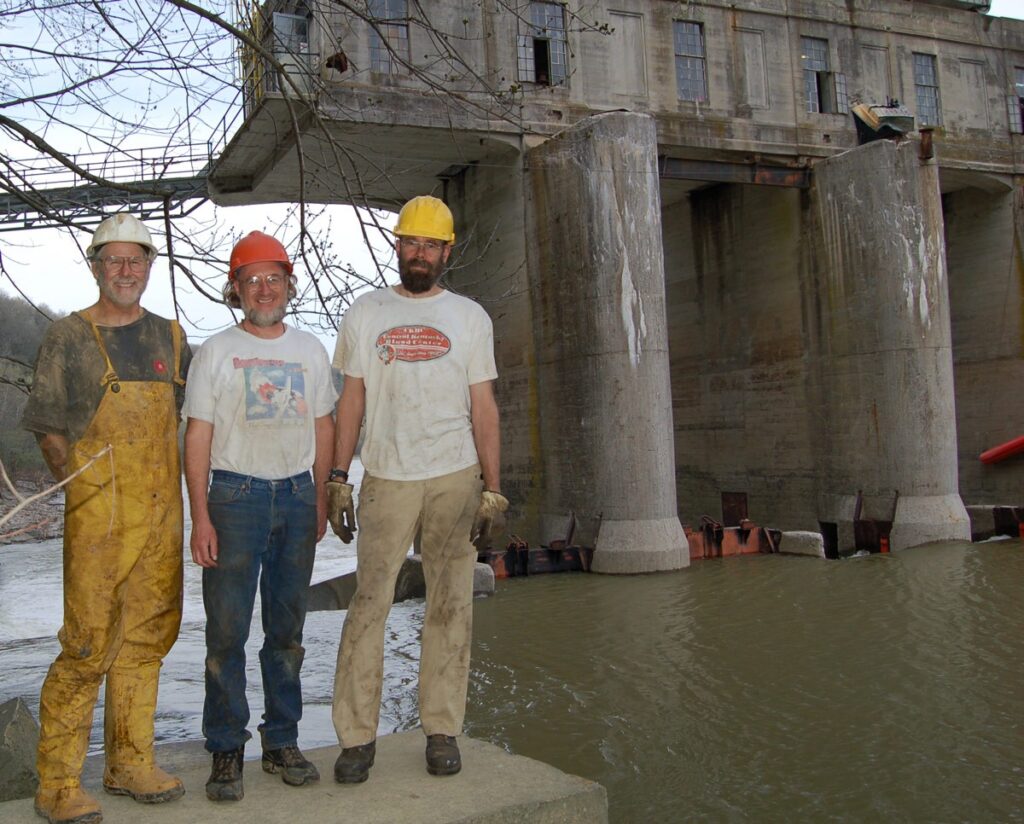The Low-Hanging Fruit of Energy Alternatives

by Zoe Strecker – Contributing writer
“Too good to be true,” might be your response if you learned that four million American homes could be powered by electricity from super-clean renewable energy sources. Yet, some 54,000 power plants poised to supply this energy are already under construction. They will have virtually no negative environmental impacts and the necessary technology is not new or experimental.
Ventures in hydropower are tapping into the tremendous potential sitting unused at dams that already exist for other purposes, like flood control, water supply, navigation and recreation.
According to the most recent study by the U.S. Department of Energy’s (D. O. E.) Wind and Water Power Program, the United States can quickly add 12,000 megawatts to the electric grid by attaching hydropower turbines and generators to dams that already exist. This is not experimental pie in the sky. The equipment is old school, extremely reliable (based on decades of field-testing) and already manufactured worldwide by established companies like General Electric.
The transmission grid already exists and many of the dams are already public property. The engineering continues to evolve in search of ways to improve efficiency, squeezing more energy out of each site. Jobs would be created for construction and maintenance of the plants.
Proponents contend the environmental impact of hydroelectric power generation is tremendously positive because these plants would offset the use of fossil fuels, especially in states like Kentucky that depend on coal for over 90 percent of electricity production.
The same D. O. E. study cited earlier estimates that our state’s total potential hydro capacity at currently non-powered dams is over 1,700 megawatts. One of Kentucky’s most respected renewable energy experts, David Brown Kinloch, has a more conservative estimate for the state, 849.54 megawatts, or enough hydropower for about 425,000 homes. Compare this to the 250,000 homes served by a large coal-fired plant like Kentucky Utilities’ E. W. Brown generating station in Mercer County.
Although the 850 megawatts of hydro represents only about 5 percent of the total amount of electricity generated by coal-fired power plants in Kentucky, every megawatt of generating capacity supports the energy needs of about 500 standard homes and reduces the need for coal and natural gas.
By offsetting the use of coal, these projects would immediately prevent hourly emissions of over a million and a half pounds of carbon dioxide from entering the atmosphere. And they reduce the toxic cocktail of nitrogen oxide, sulfur dioxide, mercury, chromium, arsenic, combustion sludge (fly ash, bottom ash, scrubber waste), ozone, soot, fine particulates and droplets of acids being released into a global environment that is becoming fragile and endangered at a disturbingly quickening pace.
One need only read the most recent conclusion of the UN Intergovernmental Panel on Climate Change to appreciate the urgency. A summary asserts that ice caps are melting, sea ice in the Arctic is collapsing, water supplies are coming under stress, heat waves and heavy rains are intensifying, coral reefs are dying, and fish and many other creatures are migrating toward the poles or in some cases going extinct. The report warns of escalating violence in conflicts over resources.

In Kentucky, two hydropower companies are developing plants capable of producing 263 megawatts at four retrofitted dams. The renovation of the Mother Ann Lee Hydroelectric Station at Lock and Dam number 7 on the Kentucky River has been completed by Brown Kinloch’s company. And three new facilities are under construction by American Municipal Power at existing large lock and dam structures, Cannellton, Smithland, and Captain Anthony Meldahl, on the Ohio River.
These projects are important as models for two reasons; building public confidence in hydropower’s feasibility, and helping the government agencies that own the dams and control river issues, i.e. the Kentucky River Authority (KRA) and the U.S. Army Corps of Engineers (ACOE), establish protocols for future projects in which private entrepreneurs want to retrofit dam sites. The smooth success of the Mother Ann Lee project helped convince the Kentucky State Legislature in July 2008, to make the development of low-impact hydropower part of the operational mandate for the KRA.
Preliminary permits have been issued by the Federal Energy Regulatory Commission (FERC) for twenty-one other projects on the Ohio, Kentucky, Salt, Licking, Barren, Green and Nolin rivers. These could provide an additional 586.5 megawatts of generating capacity. A number of these existing dams, like those on the upper Kentucky River, also have defunct lock chambers that would be used to temporarily dewater space in the river for construction and maintenance, and, therefore, significantly reduce costs.
The cost of retrofitting these lock and dam structures is about $2.5 million per megawatt of capacity. Thus, for a total of $2.125 billion, Kentucky could boast 850 megawatts of perpetual renewable energy. Once construction is complete, there would be virtually no expenses beyond predictable maintenance costs and efficiency upgrades. Most importantly, there is no fuel to purchase, ever.
Contrast this with a plant like E. W. Brown in Mercer County that burns about a million and a half tons of increasingly expensive coal a year. With hydropower, consumers’ energy bills would be lower and more stable because they would not be vulnerable to the market volatility associated with fuel and transport contracts or to rate increases as coal-fired generation plants pass along costs to customers of emissions scrubbers and toxic waste processing and storage.
Hydropower is exempt from the hidden, “externalized” costs of fossil fuel-fired power plants that are passed on to everyone and are not reflected on consumers’ electric bills or on the power utility’s bottom line. The list of damages is long (and well-documented elsewhere) including the health costs to miners (black-lung, silicosis, mining accidents, poor work conditions, job-insecurity etc.), significant quality of life costs to coal-field residents (devastated property, ruined water supply, poor air quality, hazards from slurry impoundments, road damage by mining and conveyance vehicles, etc.), damage to the environment, and to the world at large (rapid climate change caused by carbon dioxide emissions, toxicity of soil and water resulting in high levels of mercury and other toxins released by mining and combusting fossil fuels, loss of valuable ecosystems, topsoil, and habitat).

Hydro technology in the meantime continues to improve. For example, Soft Energy Associates received a prestigious 2011 D. O. E. grant to evaluate the efficiency of variable speed, permanent magnet generators for low-head hydropower at their Weisenberger Mill project near Midway, Kentucky. Their goal is to enable small sites to generate more energy from the same amount of water.
Because the transmission grid is in better condition and is more accessible in Kentucky than in many other states, renewable energy developers of all kinds, including wind, are eager to invest in generation facilities here. A surge in sustainable energy would set a powerful example in a state dominated by the coal industry.
Another Appalachian coal state, West Virginia, has developed very little hydro power capacity, despite the fact that several large, federal flood control dams in the region were originally designed to produce hydro power. Penstocks were built into the original structures at the Bluestone and Tygart dams but were never put into service because of resistance from the state’s historically domineering coal industry.
Five percent is not enough cheap, clean, renewable power for all of Kentucky, but proponents see it as a solid start and a point of potential pride.
